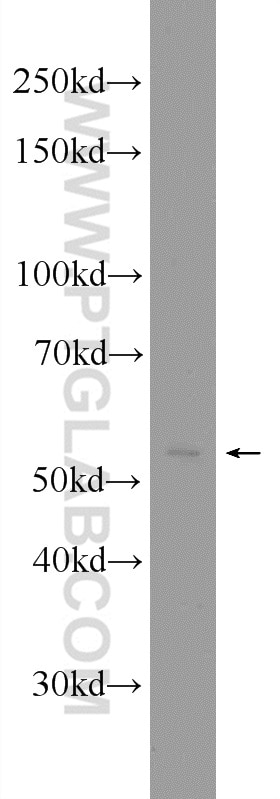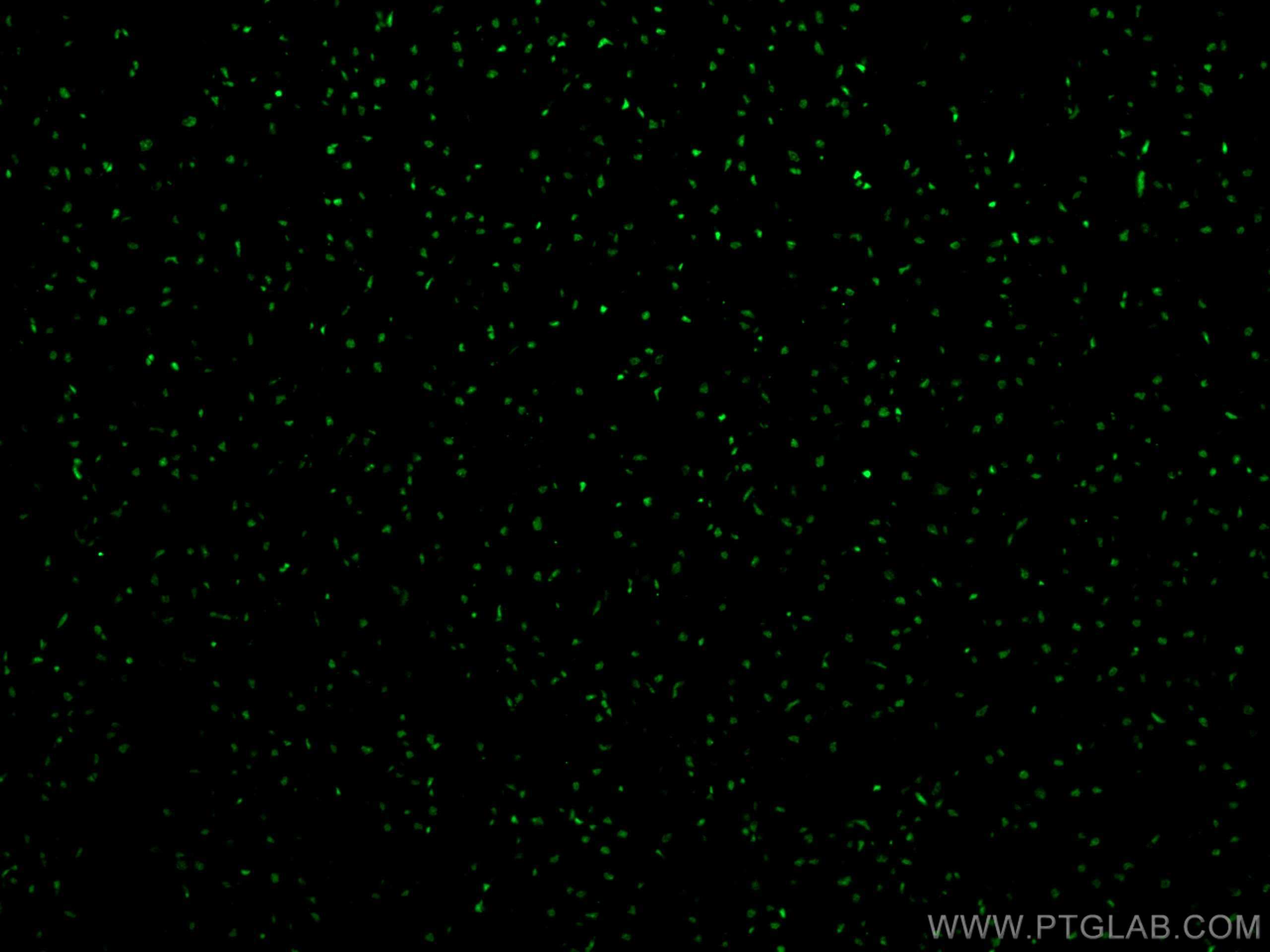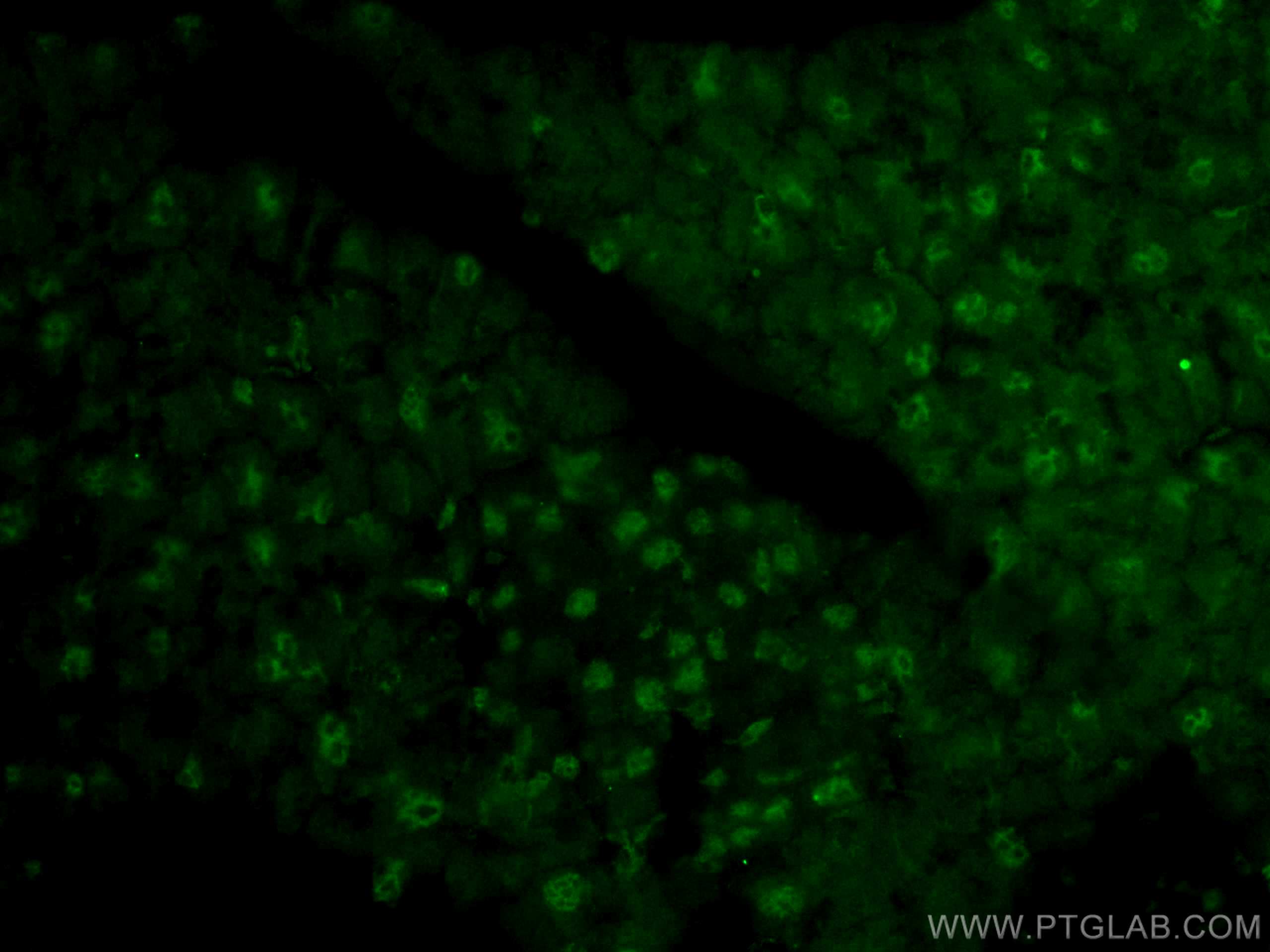SMARCD3 Polyklonaler Antikörper
SMARCD3 Polyklonal Antikörper für WB, IHC, IF-P, ELISA
Wirt / Isotyp
Kaninchen / IgG
Getestete Reaktivität
human, Maus, Ratte
Anwendung
WB, IHC, IF-P, ELISA
Konjugation
Unkonjugiert
Kat-Nr. : 12838-1-AP
Synonyme
Geprüfte Anwendungen
| Erfolgreiche Detektion in WB | HeLa-Zellen, BxPC-3-Zellen, C6-Zellen, NIH/3T3-Zellen |
| Erfolgreiche Detektion in IHC | humanes Pankreaskarzinomgewebe Hinweis: Antigendemaskierung mit TE-Puffer pH 9,0 empfohlen. (*) Wahlweise kann die Antigendemaskierung auch mit Citratpuffer pH 6,0 erfolgen. |
| Erfolgreiche Detektion in IF-P | humanes Herzgewebe, Maus-Pankreasgewebe |
Empfohlene Verdünnung
| Anwendung | Verdünnung |
|---|---|
| Western Blot (WB) | WB : 1:500-1:3000 |
| Immunhistochemie (IHC) | IHC : 1:200-1:800 |
| Immunfluoreszenz (IF)-P | IF-P : 1:50-1:500 |
| It is recommended that this reagent should be titrated in each testing system to obtain optimal results. | |
| Sample-dependent, check data in validation data gallery | |
Veröffentlichte Anwendungen
| WB | See 6 publications below |
| IHC | See 1 publications below |
Produktinformation
12838-1-AP bindet in WB, IHC, IF-P, ELISA SMARCD3 und zeigt Reaktivität mit human, Maus, Ratten
| Getestete Reaktivität | human, Maus, Ratte |
| In Publikationen genannte Reaktivität | human, Maus |
| Wirt / Isotyp | Kaninchen / IgG |
| Klonalität | Polyklonal |
| Typ | Antikörper |
| Immunogen | SMARCD3 fusion protein Ag3896 |
| Vollständiger Name | SWI/SNF related, matrix associated, actin dependent regulator of chromatin, subfamily d, member 3 |
| Berechnetes Molekulargewicht | 54 kDa |
| Beobachtetes Molekulargewicht | 54-55 kDa |
| GenBank-Zugangsnummer | BC002628 |
| Gene symbol | SMARCD3 |
| Gene ID (NCBI) | 6604 |
| Konjugation | Unkonjugiert |
| Form | Liquid |
| Reinigungsmethode | Antigen-Affinitätsreinigung |
| Lagerungspuffer | PBS with 0.02% sodium azide and 50% glycerol |
| Lagerungsbedingungen | Bei -20°C lagern. Nach dem Versand ein Jahr lang stabil Aliquotieren ist bei -20oC Lagerung nicht notwendig. 20ul Größen enthalten 0,1% BSA. |
Hintergrundinformationen
SMARCD3 is a component of the SWI/SNF (mating type switching/sucrose non-fermenting) chromatin remodeling complex, which evolutionarily conserved from yeast to human, and all complexes contain a core set of conserved components, including BRG1/Brm-associated factors (BAFs) and a DNA-dependent SWI2/SNF2-like ATPase, which enables chromatin remodeling. SMARCD3 isoforms bind to several nuclear receptors and transcription factors of various families. SMARCD3 proteins interact in a ligand-independent manner with peroxisome proliferator- activated receptor gamma and enhance its transcriptional activity.
Protokolle
| PRODUKTSPEZIFISCHE PROTOKOLLE | |
|---|---|
| WB protocol for SMARCD3 antibody 12838-1-AP | Protokoll herunterladen |
| IHC protocol for SMARCD3 antibody 12838-1-AP | Protokoll herunterladenl |
| IF protocol for SMARCD3 antibody 12838-1-AP | Protokoll herunterladen |
| STANDARD-PROTOKOLLE | |
|---|---|
| Klicken Sie hier, um unsere Standardprotokolle anzuzeigen |
Publikationen
| Species | Application | Title |
|---|---|---|
Cell Discov m6Am methyltransferase PCIF1 is essential for aggressiveness of gastric cancer cells by inhibiting TM9SF1 mRNA translation. | ||
Cardiovasc Res The G protein coupled receptor Apj is expressed in the second heart field and regulates Cerberus-Baf60C axis in embryonic stem cell cardiomyogenesis. | ||
Transl Oncol SNF5, a core subunit of SWI/SNF complex, regulates melanoma cancer cell growth, metastasis, and immune escape in response to matrix stiffness. | ||
Cells The SMARCD Family of SWI/SNF Accessory Proteins Is Involved in the Transcriptional Regulation of Androgen Receptor-Driven Genes and Plays a Role in Various Essential Processes of Prostate Cancer | ||
Nat Cardiovasc Res Translational landscape of direct cardiac reprogramming reveals a role of Ybx1 in repressing cardiac fate acquisition | ||
Prostate Low SMARCD3 expression is associated with poor prognosis in patients with prostate cancer |










